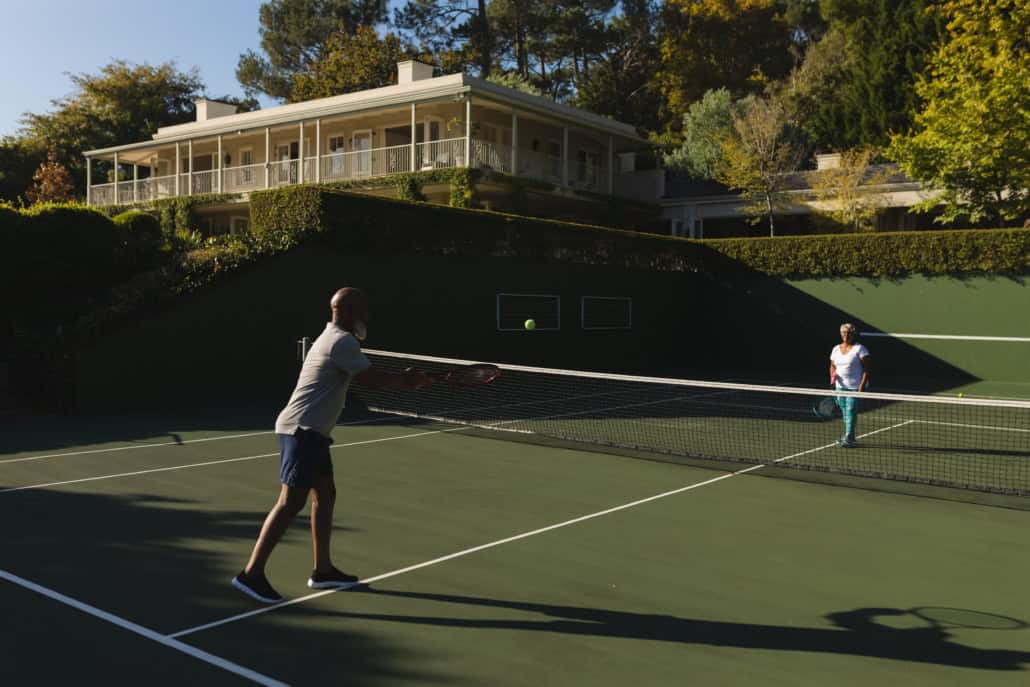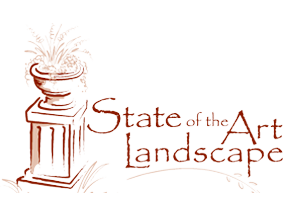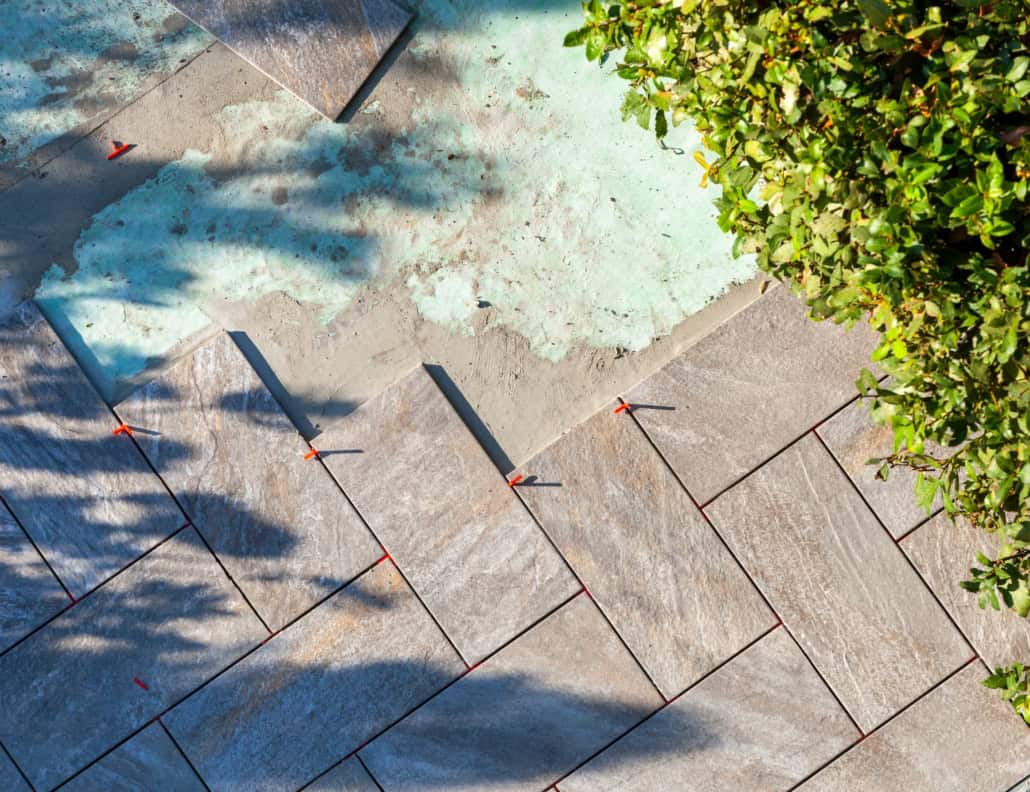Hardscaping Essentials for Every Property
Hardscaping is an integral part of landscape design, bringing structure, function, and aesthetic appeal to outdoor spaces. Unlike softscaping, which involves living elements like plants and flowers, hardscaping includes the use of non-living materials such as stone, wood, and concrete to create features like patios, walkways, and retaining walls. The right hardscaping elements can transform a yard into a functional and beautiful extension of your home. This comprehensive guide will cover the essential hardscaping elements for every property and provide insights into making the best choices for your outdoor space. Explore our related articles for deeper dives into specific hardscaping topics.
Understanding Hardscaping
To fully appreciate the role of hardscaping in landscape design, it’s essential to understand what hardscaping entails and how it differs from other landscaping elements. Hardscaping is not just about using hard materials; it’s about creating a foundation that complements the natural beauty of your landscape.
What is Hardscaping?
Hardscaping refers to the use of hard materials to build structures and features within a landscape. This can include anything from patios and pathways to stone walls and water features. Unlike softscaping, which uses plants and other organic materials, hardscaping focuses on hardscape materials creating durable, low-maintenance elements that provide both practical and aesthetic value. To fully understand the fundamentals of hardscaping, you can explore our dedicated article on what hardscaping is.
Essential Hardscaping Materials
Selecting the right materials is crucial for creating hardscaping features that are both beautiful and long-lasting. Different materials offer different benefits, and the choice of material can significantly impact the overall look and feel of your outdoor space. Here’s a look at some popular hardscaping materials:
- Stone: Natural stone is a timeless choice for hardscaping. It comes in various types, such as bluestone, granite, limestone, and travertine, each offering unique colors and textures. Stone is durable, weather-resistant, and adds a natural, elegant look to any landscape.
- Concrete: Versatile and affordable, concrete is a popular choice for patios, driveways, and walkways. It can be stamped, stained, or textured to mimic the appearance of stone or brick. Concrete is durable and can be poured into almost any shape, making it a flexible option for many designs.
- Brick: Brick provides a classic and traditional look. It’s commonly used for patios, walkways, and garden borders. Brick is durable and offers a range of color options, which can complement the existing style of a home or garden.
- Wood: While not as durable as stone or concrete, wood can add a warm and natural feel to hardscaping. It’s commonly used for decks, fences, and pergolas. Using treated or composite wood can extend the lifespan and reduce maintenance needs.
Bluestone vs. Travertine Pavers
Among the various types of pavers available, bluestone and travertine are two of the most popular choices due to their unique characteristics. Understanding the differences between these materials can help you choose the best option for your landscape design. When it comes to pavers, bluestone and travertine are popular choices due to their beauty and durability. Bluestone offers a deep, rich color and is known for its strength, making it ideal for high-traffic areas. Travertine, on the other hand, has a lighter, more porous appearance and remains cool underfoot, making it a great choice for pool areas and patios. For a detailed comparison, check out our guide on Bluestone vs. Travertine Pavers.
Creating Outdoor Living Spaces
Before diving into more specific features, it’s essential to consider the broader concept of outdoor living spaces. These areas extend your home’s living area into the outdoors, offering places to relax, entertain, and enjoy nature. Deciding whether to add a deck, patio, or other structures is a key early decision.
Decks vs. Patios
Decks and patios are both popular choices for creating outdoor living spaces, but they each have their unique benefits and considerations. Decks, typically elevated and made from wood or composite materials, are ideal for uneven terrain or adding height to a landscape. Patios, on the other hand, are built directly on the ground using materials like stone, concrete, or brick, offering a sturdy and versatile surface for outdoor activities. Choosing between a deck and a patio depends on your property’s layout, budget, and personal preferences. Our Decks vs. Patios FAQs article provides more insights into making the right choice for your home.
Pergolas & Pavilions
Beyond decks and patios, pergolas and pavilions are also fantastic additions to any outdoor space, offering shade, style, and a sense of enclosure. A pergola, with its open, airy structure, is perfect for creating a shaded walkway or a cozy sitting area. Pavilions, which feature a solid roof, offer more substantial protection from the elements and can house outdoor kitchens, dining areas, or lounges. When designed well, these structures can become the centerpiece of your garden. Explore our ultimate guide to pergolas and pavilions for inspiration and design tips.
Building Functional and Aesthetic Structures
Now that you have a sense of the main living areas, you can consider additional structures that add both functionality and aesthetics. These elements can serve practical purposes, such as retaining soil or gravel or providing seating, while also enhancing the visual appeal of your outdoor space.

Stone Garden Walls
Stone garden walls are a versatile hardscaping feature that can serve various purposes, from retaining soil to creating raised flower beds or simply adding visual interest to a landscape. Common stone choices include fieldstone, flagstone, and river rock, each offering unique textures and colors. Building a stone garden wall requires careful planning to ensure stability and durability. For more detailed information on the construction and use of stone garden walls, see our article on Stone Garden Wall Basics.
Stacked Rock
Another popular hardscaping technique is the use of stacked rock. Stacked rock is a method that involves carefully placing stones without mortar to create a natural-looking structure. This method can be used for creating garden borders, retaining walls, or decorative features. Stacked rock designs can enhance the rustic appeal of a garden and blend seamlessly with natural landscapes. Choosing the right type of rock and ensuring proper stacking techniques are essential for stability and aesthetics. Learn more about the basics of stacked rock.
Enhancing Outdoor Enjoyment with Fire Features
After establishing the main elements of your outdoor space, consider features that enhance its usability and enjoyment. Fire features are popular because they provide warmth, ambiance, and a focal point for gatherings.
Fire Pits
Fire pits are a popular hardscaping feature that can transform an outdoor area into a cozy gathering spot. Whether you choose a traditional wood-burning fire pit or a more convenient gas-powered option, fire pits provide warmth, light, and ambiance. They come in various shapes and sizes, from portable metal designs to custom-built stone installations. Safety is a crucial consideration when installing and using fire pits, and choosing the right location and materials is essential. For more on choosing and maintaining a fire pit, check out our detailed post on Fire Pits Explained.
Integrating Hardscaping with Natural Elements
While hardscaping provides structure, it’s essential to balance these elements with natural components to create a harmonious outdoor environment. Integrating plants and natural features can enhance the overall beauty and curb appeal, of your landscape.
Right Plant, Right Place
Successful hardscaping is about more than just the non-living elements; it’s also about how those elements interact with the natural environment. Selecting the right plants to complement your hardscaping can enhance the overall look and feel of your outdoor space. Consider the climate and weather conditions when choosing plants to ensure they thrive alongside your hardscaping features. Proper planning can lead to a balanced, harmonious landscape that’s both beautiful and sustainable. For tips on plant selection and placement, visit our guide onRight Plant, Right Place – Weather Wise.
Lighting: The Finishing Touch
Lighting is the finishing touch that can transform a good hardscape into a great one. Proper lighting enhances safety, highlights architectural features, and extends the usability of your lawn and outdoor spaces into the evening. Options include path lights, spotlights, and uplights, each serving different purposes. Energy-efficient LED options and solar-powered lights are also available for eco-conscious homeowners. To learn how to create a stunning night-time landscape, read our post on Landscape Lighting That Wows!
Unique Hardscaping Ideas for Recreational Spaces
For homeowners looking to incorporate recreational elements into their landscape, hardscaping offers a variety of options. Sports courts, for instance, can add functionality and enjoyment to your outdoor space.

Sports Courts
For those looking to add a recreational element to their landscape, sports courts are an exciting option. Whether it’s a basketball court, a tennis court, or even a bocce ball area, incorporating sports into your backyard design can provide entertainment and exercise opportunities. These features can be seamlessly integrated with other hardscaping elements, creating a cohesive and functional outdoor space. Learn more about designing recreational spaces with our guide on 5 Sports Court Designs You Didn’t Know You Needed.
Transform Your Outdoor Space with State of the Art Landscape
Hardscaping is a vital component of landscape design, offering both functional and aesthetic benefits. By choosing the right materials, building thoughtful structures, and integrating natural elements, hardscaping helps you can create an outdoor space that enhances your property’s value and your quality of life. Whether you’re adding a simple stone walkway or designing a complex outdoor living area, understanding hardscaping essentials is the first step towards a successful project.
State of the Art Landscape specializes in landscape design and build, creating customized outdoor spaces that fit your lifestyle. Let us help you tell your story through beautifully designed hardscaping features. From stone terraces and fire pits to pergolas and pavilions, we bring your dream outdoor space to life using the highest quality materials and craftsmanship.
Request a consultation today to begin designing your ideal landscape. Contact us now to schedule an appointment and start the journey toward a stunning, functional outdoor space that reflects your unique style and needs.

